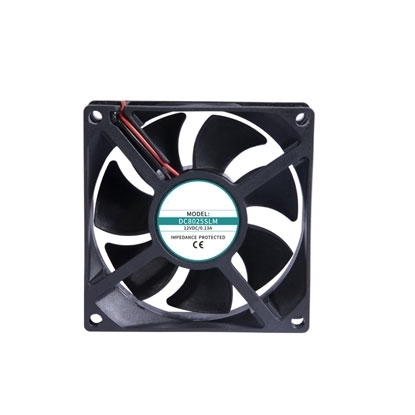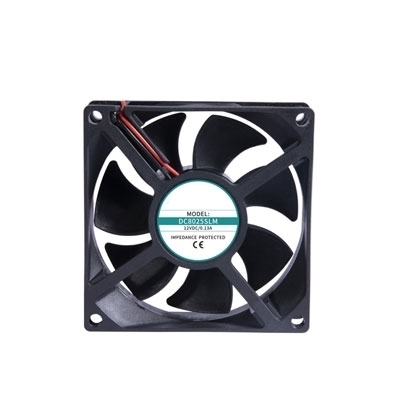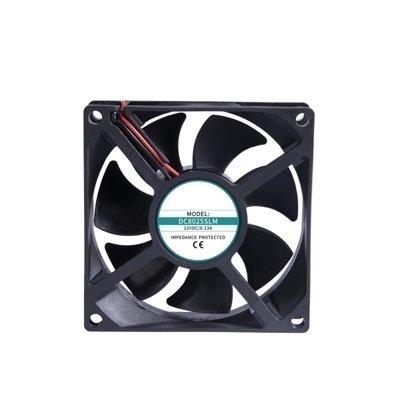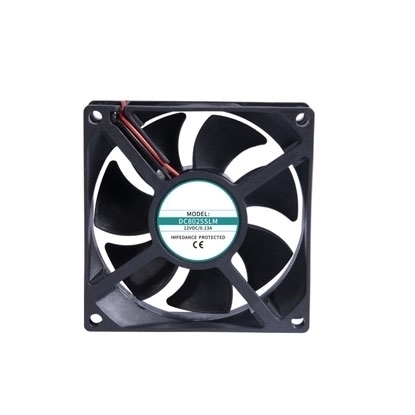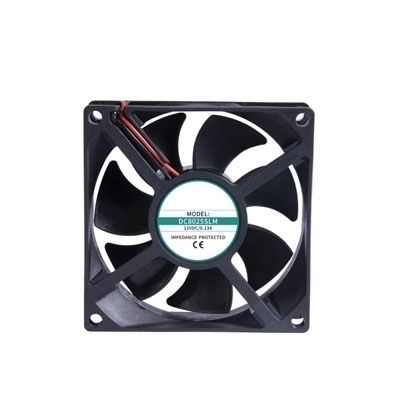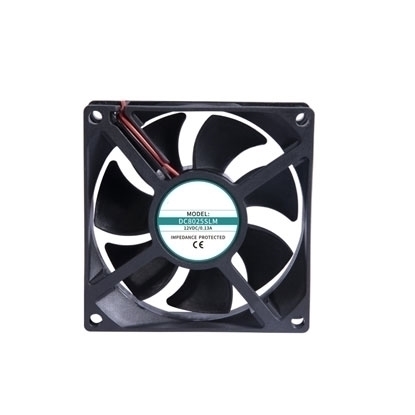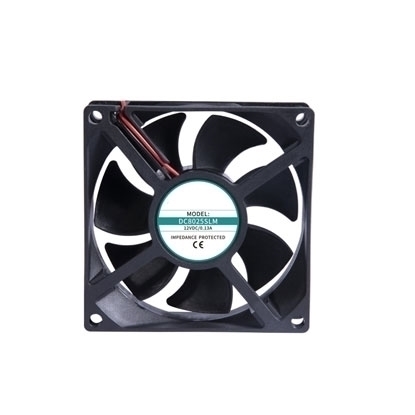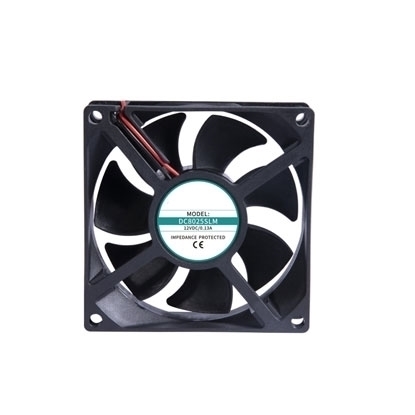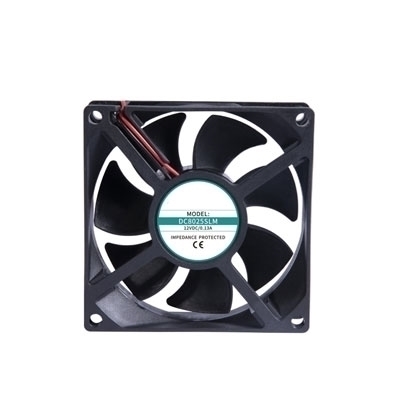DC Cooling Fan
12V/24V DC Cooling Fan, 40mm x 40mm x 10mm
12V/24V DC Cooling Fan, 40mm x 40mm x 20mm
12V/24V DC Cooling Fan, 50mm x 50mm x 15mm
12V/24V DC Cooling Fan, 60mm x 60mm x 15mm
12V/24V DC Cooling Fan, 60mm x 60mm x 25mm
12V/24V DC Cooling Fan, 80mm x 80mm x 25mm
12V/24V DC Cooling Fan, 92mm x 92mm x 25mm
12V/24V DC Cooling Fan, 120mm x 120mm x 25mm
12V/24V DC Cooling Fan, 140mm x 140mm x 25mm
The brushless DC cooling fan is a high-quality, energy-efficient solution for cooling electronic devices and equipment. Designed with advanced technology, it provides excellent performance and durability, making it a popular choice for various industrial applications.
This fan operates silently and smoothly, with a low vibration motor that ensures quiet and efficient operation. It features a high-speed air flow and a compact design that fits easily into tight spaces. With a wide range of speed control options, it can be customized to suit any specific cooling requirements.
Built with high-quality materials and components, this fan is designed for long-lasting use and is resistant to wear and tear. It has a high air flow rate, making it ideal for use in harsh environments and extreme conditions.
Our brushless DC cooling fan is available in a range of sizes and designs to suit different applications, from small electronic devices to large industrial machines. Its versatile design and customizable options make it an ideal choice for many industries, including computer, automotive, medical, and aerospace. Order your brushless DC cooling fan today and experience the benefits of advanced cooling technology!
AC vs. DC Cooling Fan:
Although now DC cooling fans and AC cooling fans are everywhere in life, but many people are not very clear about these fans will be. Here are five points to introduce their differences.
- Power Supply. DC cooling fans run on direct current, while AC cooling fans run on alternating current.
- Working Principle. The principle of a DC cooling fan is to transform electrical energy into mechanical energy to drive the blade to rotate rapidly through DC voltage and electromagnetic induction. The coil and IC are constantly switched, and the inductive magnetic ring drives the blade to rotate. The principle of ac fan is driven by AC power supply, the voltage will be positive and negative alternating, no need for circuit control, magnetic field. The frequency of power supply is fixed, and the change speed of magnetic pole generated by silicon steel plate is determined by the frequency of power supply. The higher the frequency, the faster the switching speed of magnetic field.
- Bearing. In general, the varieties used above the radiator dispersion are: the use of sliding friction sleeve bearings and the use of rolling friction bead bearings and two kinds of bearing forms mixed these three.
- Material. The AC cooling fan frame is usually aluminum, while the DC cooling fan frame is plastic. The high temperature resistance is different. The AC cooling fan frame is better.
- Air Volume. For cooling fans of the same size, AC cooling fans have large motor volume and short fan blades, while DC cooling fans have small motors with long fan blades, so the wind flow driven by the unit area is more, the air volume is larger and the heat dissipation capacity is better.
DC Cooling Fan Working Principle:
The cooling fan is a novel machine electromechanical fan. The electromagnetic induction principle is employed. The Holzer induction element is used as a synchronous detection device, controls a set of circuits, the winding windings, generates a rotary magnetic field and implements electron-changing electronography.
 The cooling fan is powered by DC power supply. The DC motor consists of two parts of the stator and the rotor. There is a magnetic pole in the stator, and there is a winding on the rotor. After charges, the rotor also forms a magnetic field (magnetic pole) having a corner between the magnetic poles of the stator and the rotor, which is the mutual attraction force of the stator and the rotor magnetic field under the rotation of the motor (N pole and S pole).
The cooling fan is powered by DC power supply. The DC motor consists of two parts of the stator and the rotor. There is a magnetic pole in the stator, and there is a winding on the rotor. After charges, the rotor also forms a magnetic field (magnetic pole) having a corner between the magnetic poles of the stator and the rotor, which is the mutual attraction force of the stator and the rotor magnetic field under the rotation of the motor (N pole and S pole).
Changing the position of the brush can alter the angle of the rotor magnetic pole (assuming the edge of the stator magnetic pole begins, the magnetic pole of the rotor is another aspect, and the rotor direction is pointing to the direction of the rotation of the engine). After this operation, you can change it. The direction of rotation of the machine.
How to control the speed of a DC cooling fan?
There are a few ways to control the speed of a DC cooling fan:
- Voltage Control: The simplest way to control the speed of a DC fan is by adjusting the voltage supplied to it. The fan speed is directly proportional to the voltage supplied to it. So, by reducing the voltage, the fan speed will decrease, and by increasing the voltage, the fan speed will increase.
- PWM Control: Pulse Width Modulation (PWM) is another way to control the speed of a DC fan. In this method, the fan is supplied with a constant voltage, and the speed is controlled by varying the duty cycle of the PWM signal. A higher duty cycle will result in a higher fan speed, and a lower duty cycle will result in a lower fan speed.
- Temperature Control: Temperature-based fan control is a more advanced method that uses a temperature sensor to adjust the fan speed based on the ambient temperature. As the temperature increases, the fan speed will also increase to cool down the system.
- Fan Speed Controller: There are fan speed controllers available that can be used to control the speed of a DC fan. These controllers typically use PWM or voltage control to adjust the fan speed, and they can be manually or automatically controlled.
It is important to note that not all DC fans are designed to be speed-controlled. Make sure to check the specifications of the fan before attempting any speed control methods.
What Factors Affect Noise of DC Cooling Fan?

- Speed. The faster the DC fan rotates, the bigger the fan, the louder the noise.
- Bearings. The bearings of DC fans are briefly divided into two types, one is oil and the other is ball. Under normal circumstances, ball bearing fans are more noisy than bearing bearing fans.
- Airflow. During the rolling of fan blades, they will encounter resistance in the air. The faster the rolling speed, the larger the blade area and the greater the resistance, so the noise will be greater.
- Conflicting Force. If the fan is used for a long time, the fan will be excessively racked, vibrated, and the center of gravity is unstable. This will cause a collision or conflict between the fan blade and the fan frame, and then generate noise.

